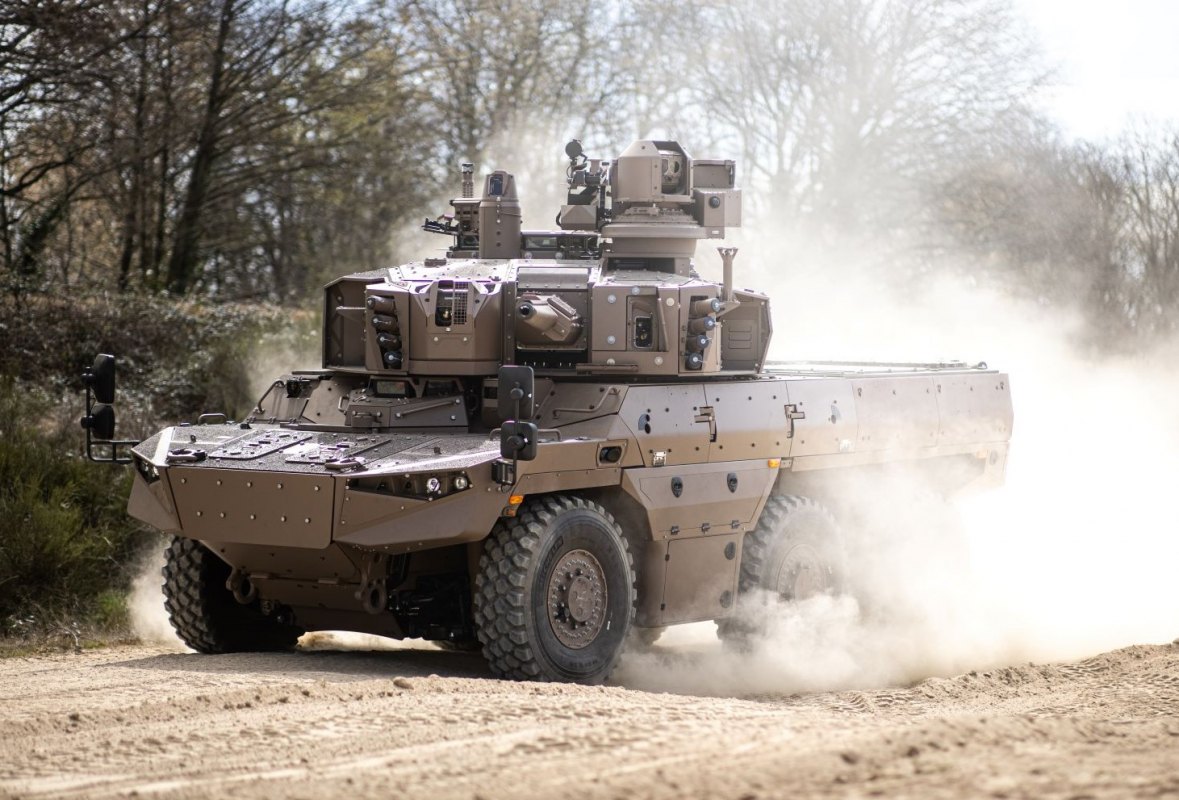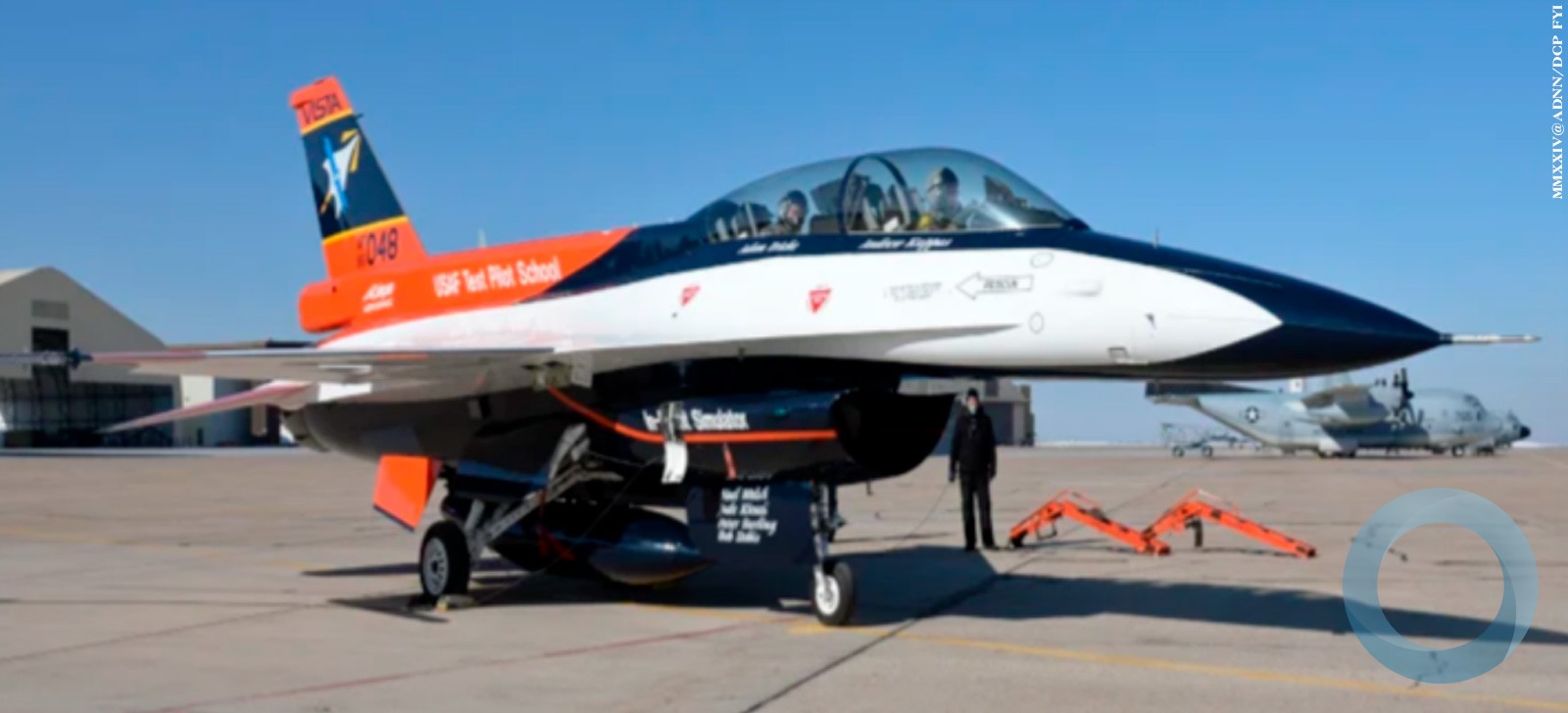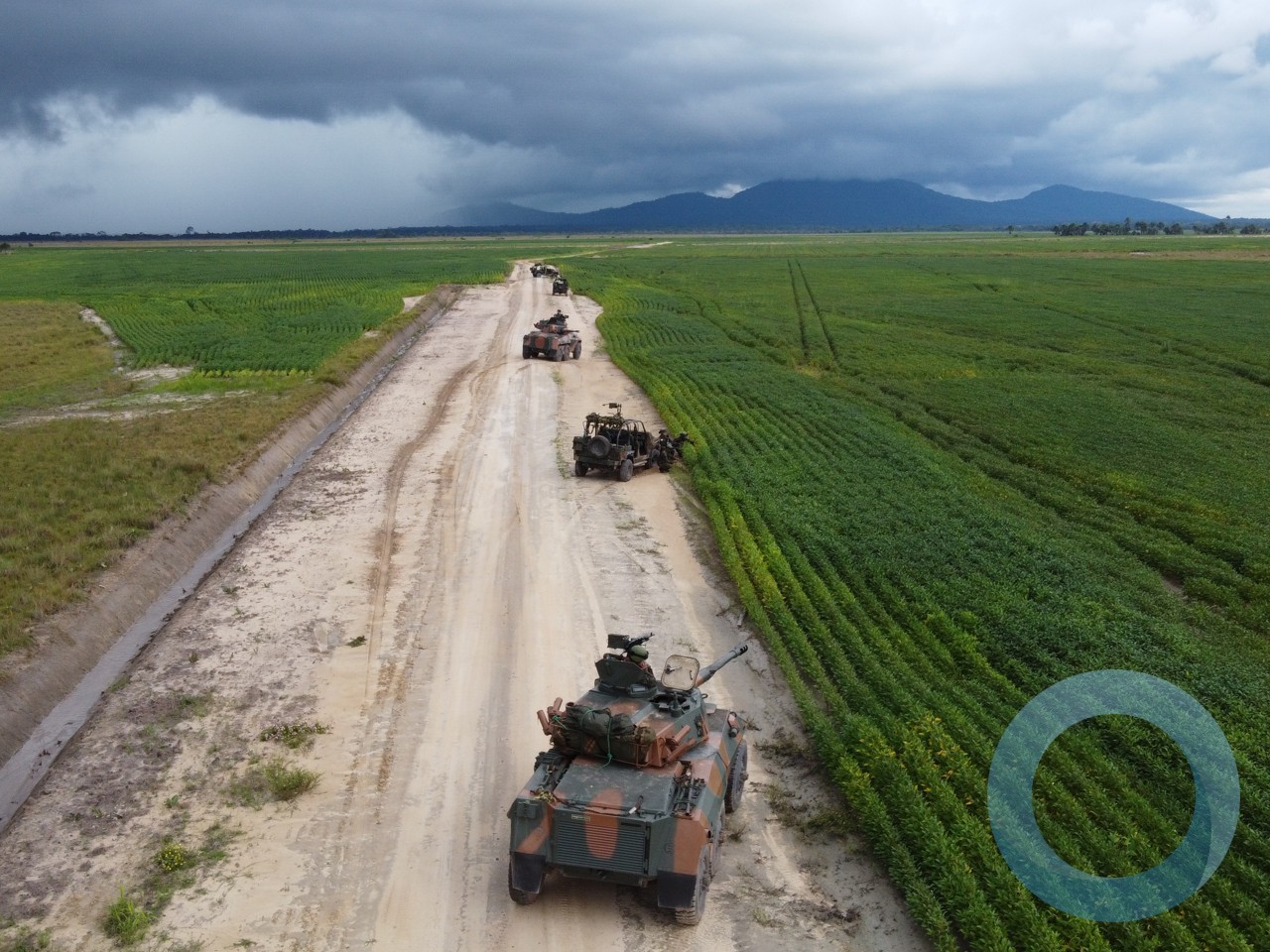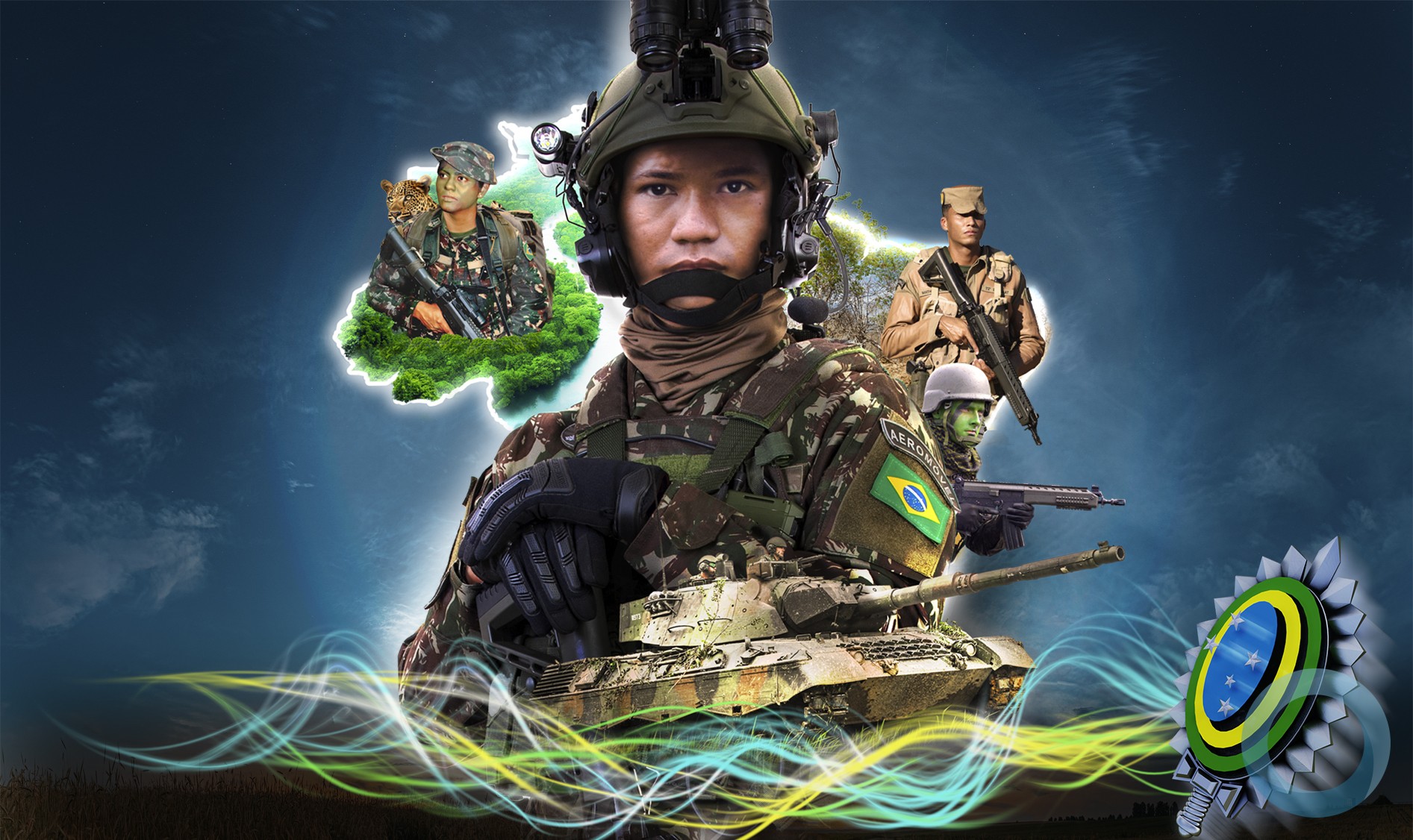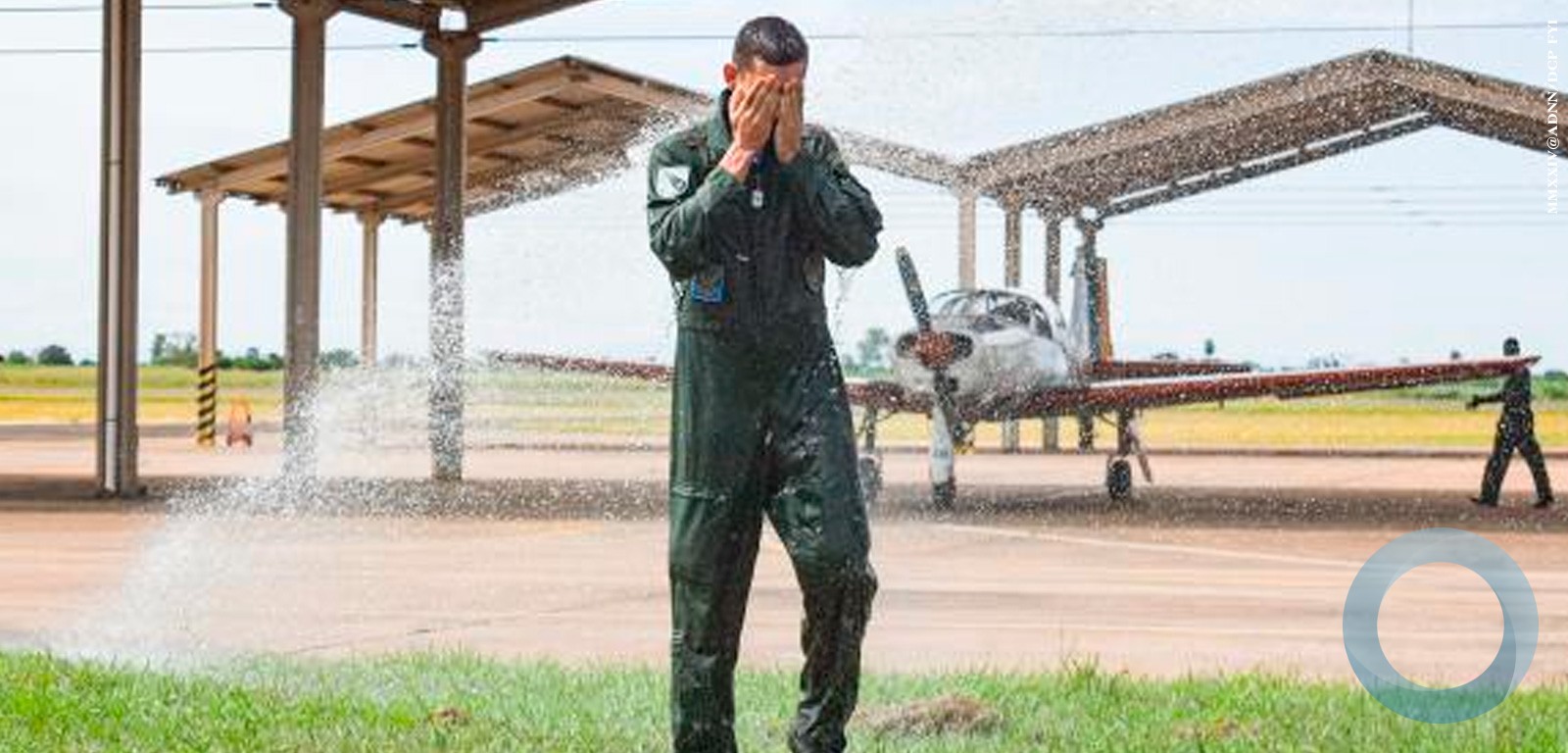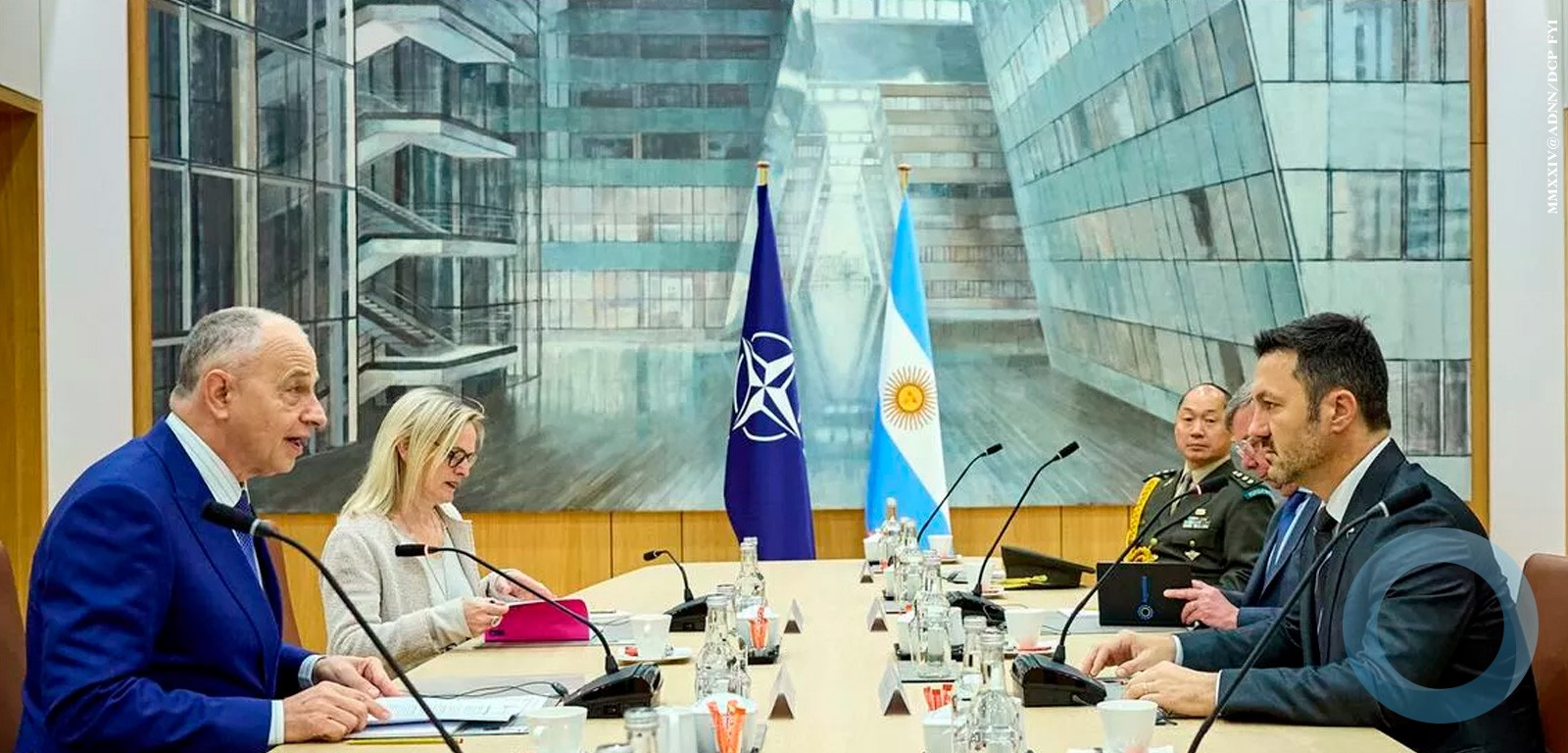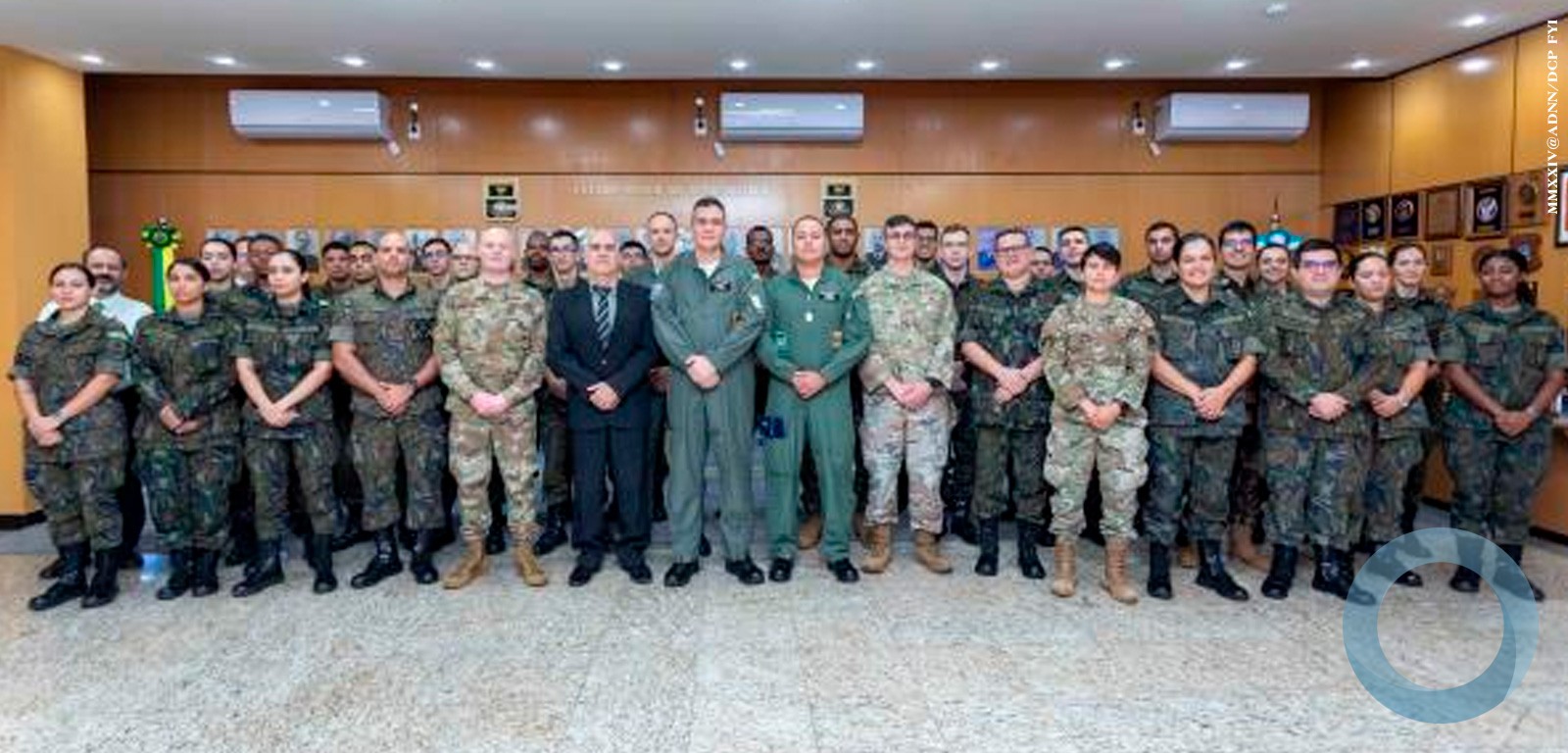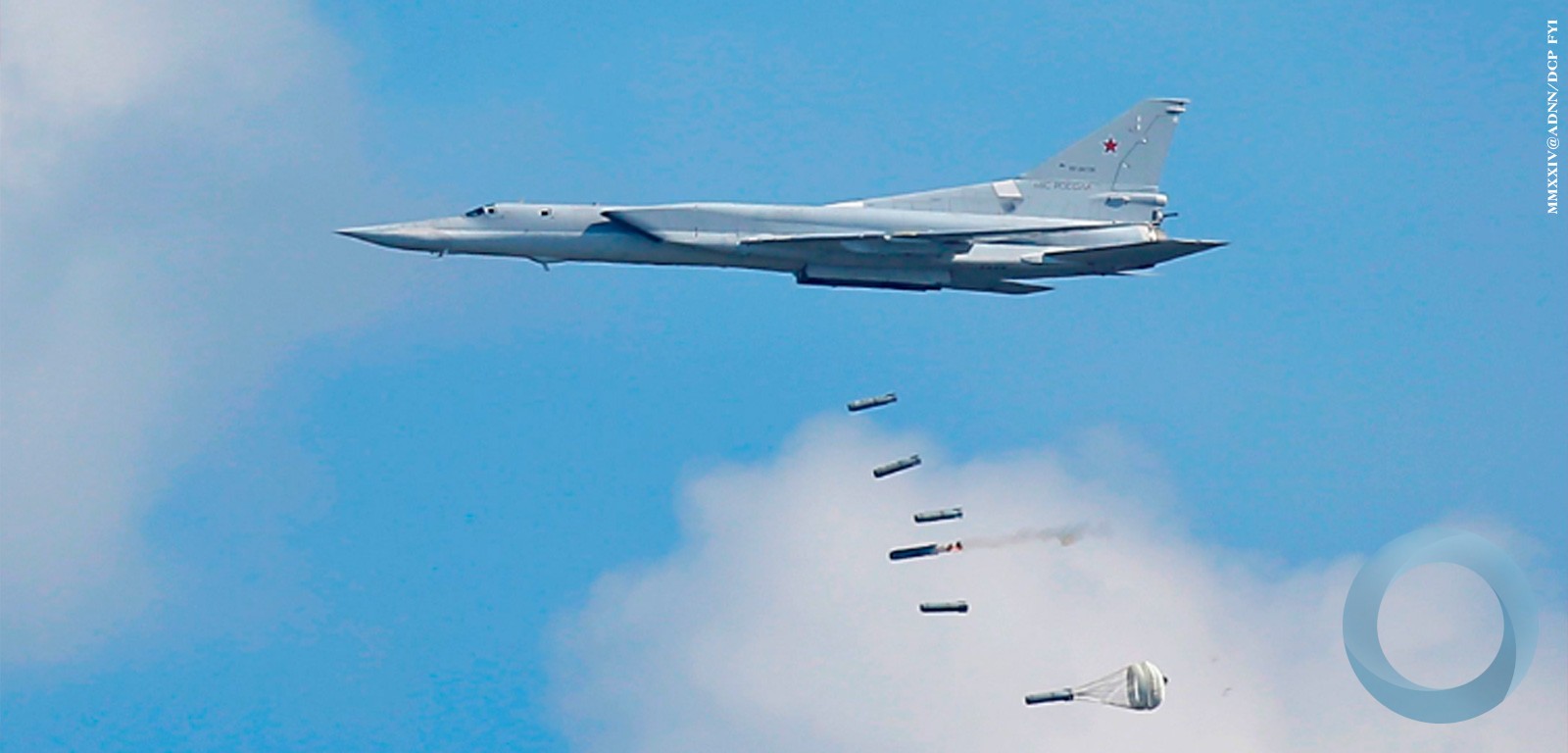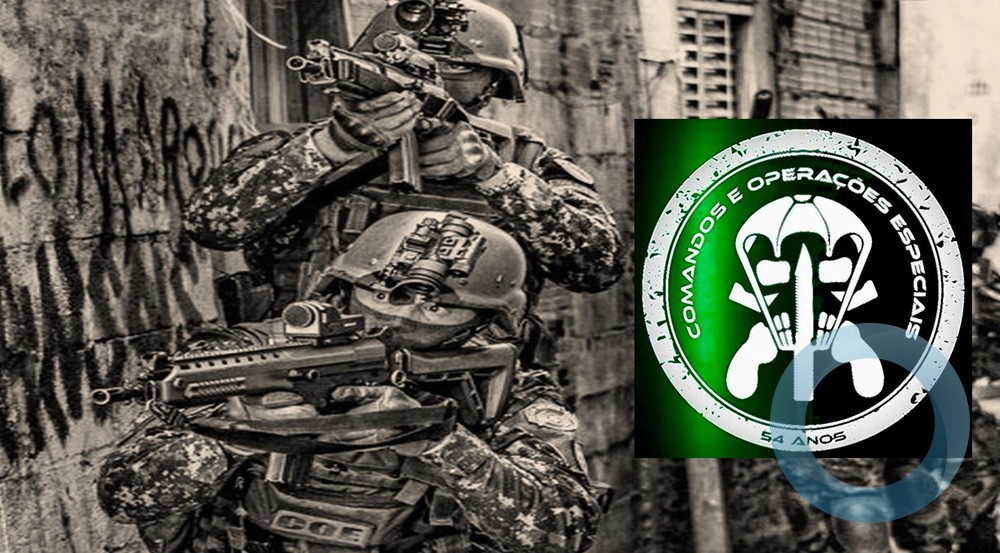Brigadier General Roberto Escoto
“Although differences between gangs and insurgents regarding motives and modes of operations exist, this linkage infers that third generation gangs (3G2) are mutated forms of urban insurgency.” [1]
– Max G. Manwaring (Ph.D. in Political Science), U.S. Army War College.
In addition to being part of the Brazilian Army’s Strategic Operations Forces, the Paratrooper Infantry Brigade and 12th Airborne Light Infantry Brigade constitute strategic rapid response forces because they have the ability to respond quickly and project force into any part of Brazilian territory and its strategic surroundings. It is for these same reasons that the best armies in the world initially deploy their paratrooper units to be used as expeditionary forces.
In the irregular, asymmetric conflicts of the 21st century, the use of special operations forces and conventional paratrooper and airborne forces able to intervene swiftly and effectively as contingency forces in crisis and conflict situations has been increasingly common. The 82nd Airborne Division, 101st Airborne Division and 173rd Airborne Brigade of the United States, as well as the 16th Air Assault Brigade of the United Kingdom had leading roles in operations to combat groups of violent extremists in Afghanistan and Iraq, as well as France’s 11th Paratrooper Brigade, which was active in Afghanistan and Mali.
Extremist violence is the result of the beliefs and actions of individuals or groups that use violence to achieve political, ideological, social, ethnic, or religious objectives. It includes insurgency, subversion, terrorism, and other forms of common violence [2]. Irregular forces constitute the armed wing of these groups that resort to irregular warfare to achieve their goals.
Paratroopers assumed the same leading role when the Brazilian Army was deployed to combat extremist violence in the 1960s and ’70s and crisis situations involving public security in various states of the Brazilian federation caused by the absence, insufficiency, or unavailability of state law enforcement agencies. Historically, the Paratrooper Infantry Brigade has been the first unit deployed to fulfill these missions, as provided for in the Constitution of the Federal Republic of Brazil.
In 1994 and ’95, the Brigade was deployed during “Operation Rio” with Army Infantry Battalion and Air Force reinforcements due to increased violence in the hills and other districts of the city that created an unsafe climate provoked by drug traffickers and various gangs that frequented funk dances, used drugs, and instigated looting.
From November 2010 to February 2011, in the face of another public security crisis in Rio de Janeiro, which was soon to host a series of major international events, the Brigade was the first unit deployed in “Operation Archangel” in the Alemão and Penha slums, a pacification operation that would last 583 days.
In April 2014, after several attacks on Police Pacification Units (UPP, for its Portuguese acronym) produced countless deaths among the military police and damages to their facilities, equipment, and vehicles, the Paratroopers were once again the first to be deployed for the difficult mission of pacifying Maré, the largest complex of slums in Rio de Janeiro. Consisting of 15 communities and a population of about 140,000 inhabitants, equivalent to a medium-sized Brazilian city, the inhabitants were terrorized by the violent actions of three rival criminal gangs that use the tactics, techniques, and procedures of violent extremist groups such as the Red Command, the Third Pure Command, and the militias.
The historical root of this is the origin of the Red Command, a criminal organization that descended from the Red Phalanx, formed in 1979 in the Cândido Mendes prison on Ilha Grande, in Angra dos Reis. In the early 1980s, after years of living together with terrorists, prisoners that escaped Ilha Grande began to rob numerous banks, businesses, and jewelry stores, putting into practice the teachings of terrorist Carlos Marighella, who wrote the Minimanual of the Urban Guerrilla.
In the early 1990s, the Red Command influenced the creation of the First Capital Command in São Paulo, a criminal organization whose involvement with the terrorist group Hezbollah in the tri-border area between Brazil, Argentina, and Paraguay since 2006 has become increasingly more evident following new investigations by the Federal Police [3].
Another strong indication of the association of organized crime and drug trafficking with groups of violent extremists is that in April 2001, drug trafficker and Red Command leader Luiz Fernando da Costa, better known as Fernandinho Beira-Mar, was arrested in Colombia where, according to investigations, he was negotiating an exchange of weapons for cocaine with Revolutionary Armed Forces of Colombia (FARC) guerrillas [4].
This article analyzes the phases of planning, preparation, and employment of the Paratrooper Infantry Brigade in the pacification of the Maré slum complex in Rio de Janeiro, and presents the main lessons learned and the results of the operation. Moreover, it examines the impact on the organization, equipment, and deployment policy of Brazilian Army infantry brigades, highlighting the importance of preparing for operations against irregular forces in urban and rural environments.
OPERATION PLANNING
The pacification of the Maré complex was planned and executed as a broad-range operation within a very complex, unstable, and uncertain operating environment. The planning emphasized intelligence operations, special operations, information operations, interagency operations, and operations against irregular forces in an urban environment.
Starting on April 5, 2014, the mission of the Maré Pacification Force was to seize the entire Maré Area of Operations using ground, motorized, and mechanized forces, replacing Rio de Janeiro’s State Military Police (PMERJ) who were operating in the area, and conduct operations to pacify the Maré Area of Operations in conjunction with other security and public order agencies, as well as other civilian agencies (governmental and nongovernmental). The goals were to protect the population; prevent and subdue gang activity; arrest its members; and seize weapons, ammunition, drugs, and other illicit materials [5].
The intent of the brigade commander was to maximize intelligence, special operations, and information operations; use offense, surprise, and bulk force; establish fortified positions; conduct ground, motorized, and mechanized saturation patrols; conduct sweeps; search and seizure; and win the support of the area’s population –the operation’s center of gravity– in a coordinated, integrated, and synchronized effort of interagency operations. The end goal was to suppress or reduce the criminal gangs’ freedom to act and to establish and maintain a secure and stable environment for the area’s population [6].
The desired end was to gain the active support of the population and to dismantle the criminal gangs in the center of the operation. This would help ensure a secure and stable environment (strategic objective) and create adequate conditions for the installation of UPPs in the Maré Area of Operations (political objective).
The choice of public support as the center of gravity means that the pacification force emphasized operations focused on the population (population-centric operations), in which the study and use of the human terrain is predominant over the physical terrain. Among the factors in decision-making, the civilian considerations had very high priority. In addition, the intelligence operations were not limited to information about the opposing forces, as occurs in conventional conflicts between state actors.
The intelligence also prioritized the collection and pursuit of information about the population – the center of gravity in irregular, asymmetric conflicts in the 21st century. According to Gen. Stanley McChrystal, Commander of the International Security Assistance Force (ISAF) in Afghanistan from 2009 to 2010, "Protecting the people is the mission. The conflict will be won by persuading the population, not by destroying the enemy." [7]
TROOP PREPARATION
It’s important to note that the first operational programs of the Brazilian Army – the precursor to paratrooper, special operations, and commando actions – originated in the Paratrooper Infantry Brigade in the 1950s and ‘60s. In addition, the Jungle Warfare Training Center (CIGS, for its Portuguese acronym) was created in 1964, and the Special Training Section at the Agulhas Negras Military Academy (AMAN, for its Portuguese acronym), in 1967, both with the participation of paratrooper officers as instructors. Because of this, the Paratrooper Infantry Brigade can be considered the Brazilian Army’s special operations pioneer, particularly with regard to tactics, techniques, and procedures for counterinsurgency operations, which were then conveyed to the rest of the ground forces.
The Brazilian Army’s new manual for pacification operations (EB20-MC-10,217) establishes three stages for the use of ground forces in this type of operations: intervention, stabilization, and normalization (clear, hold and build phases [8]). The intervention phase is mainly focused on enforcement actions in urban or rural environments. In the stabilization phase, there is a balance between enforcement and constructive actions, while the normalization phase is dominated by constructive actions for the development of an environment conducive to reestablishing state control over the pacification area [9].
In conducting enforcement actions through the use of ground combat power, normally during joint actions to neutralize opposing forces, it is imperative that pacification forces be able to plan and execute operations against irregular forces in urban and rural environments.
Operations against irregular forces include: interdiction operations with external support; operations to control the population and local resources; police-type operations; operations to restore basic infrastructure and humanitarian assistance; combat operations including counterinsurgency, antiterrorism (defensive actions of a preventive nature); and counterterrorism (offensive actions of a repressive nature performed exclusively by Special Operations Forces).
Violent extremist groups linked to criminal organizations, such as the FARC, Shining Path, Paraguayan People's Army (EPP), and Hezbollah are active in bordering countries and constitute a threat to peace and national security by violating our borders and smuggling and trafficking in arms, drugs, and people, or, in the worst-case scenario, by carrying out terrorist acts inside Brazilian territory. The current situation underscores the importance of preparing infantry brigades for special operations against irregular forces.
Full-spectrum operations, especially operations against irregular forces, with a greater focus on antiterrorism and counterinsurgency, have received great emphasis in training Brazilian paratroopers. During 2012, 2013, and 2014, Operation Saci, a traditional exercise in the advanced training program, was planned and executed with troops within a framework of asymmetrical, irregular, extra-regional conflict, in which the Brigade was part of the military force of a multinational coalition and began its strategic deployment through an air-ground incursion into the Area of Operations.
USE OF TROOPS
Intelligence
An accurate and effective intelligence system is an essential condition for the success of the pacification force. To provide this, an intelligence center was established, led by an intelligence officer (D/2), and staffed with personnel from the intelligence section of the Infantry Paratrooper Brigade and intelligence and counterintelligence reinforcement elements from the Army Intelligence Center (CIE for its Portuguese acronym). It was essential for the command of the pacification force to hold periodic meetings with representatives from the intelligence agencies of the State of Rio de Janeiro Department of Public Security, the Federal Police, Civil Police, and Military Police in order to establish personal ties of mutual trust and technical channels for the sharing, analysis, and dissemination of information.
A strategic area survey that had been drafted and updated in prior years greatly facilitated the planning and execution of the peace keeping operations in Maré before potentially deploying the Paratrooper Infantry Brigade in that area of operation. However, due to the culture of conventional combat intelligence focused on the enemy (enemy-centric intelligence), the lack of prior research on the human terrain had to be compensated for after the start of operations through special reconnaissance operations by the Special Operations Task Force and through the work of the Information Support Operations Detachment (DOAI, for its Portuguese acronym), the civil-military cooperation cell, and the intelligence sections of the pacification force, the Paratrooper Infantry Brigade Task Forces, and the Marine Operating Group. This underscores the importance of having human terrain teams that are integrated with civilian specialists and subordinate to an intelligence operations cell.
In 2011, after the start of pacification operations in the Alemão and Penha slum complexes, the CIE included guidelines for the formation and operation of company-level intelligence cells [10] in the preparation of its contingencies, incorporating the lessons learned from the U.S. Army and Marine Corps in the war in Afghanistan [11].
Drawing from the Brazilian experience in Operation Archangel, the Paratrooper Infantry Brigade established the role of these cells in all of the operational companies in the Maré Pacification Force, since smaller units immersed in the human terrain are better able to obtain data.
The intelligence cell, composed of the company’s second-in-command and the sergeants in the command section, coordinated the platoon and squad data collection efforts by conducting briefings as patrols departed from and returned to the company base, preparing themselves to routinely give brief updates to the company commander and S/2 in their subsection [12].
Unlike conventional combat operations, the pacification force does not depend greatly on the intelligence agencies of the ground force’s upper echelons. The pacification force received about 90% of its valid intelligence from the subordinate echelons, according to data obtained by the company intelligence cells. Informants were another important source, communicating through personal contacts, through WhatsApp or through a pacification call-in line deployed by the pacification force.
Image intelligence (IMINT) was obtained by means of satellite images, through helicopter surveillance, and via the Brazilian-made CARCARÁ II, a remotely piloted aircraft system from the Marine Operating Group. Signals intelligence (SIGINT) was obtained by the pacification force’s Electronic Warfare Cell, which intercepted signals, and by patrols who seized radio equipment from “scouts” [13] and monitored gang communications, enabling them to collect valuable information, such as positions, routines, plans, ways of operating, and alert signals when troops got near.
The use of the Eagle Eye System (FLIR), from Army Aviation allowed the pacification force’s operations base to monitor the various operations carried out by the troops in real time, ensuring situational awareness and making the command’s decision-making process easier. The ability to generate thermal images from the Navy’s HS-1 Seahawk and the Army’s HA-1 Esquilo (H125M formerly the AS550 C3e Fennec, named HA-1 Squirrel in Brazil) made it possible to clearly identify individuals armed with rifles and pistols during the night shift inside the Area of Operations.
While IMINT and SIGINT have been very important, there is no substitute for human intelligence (HUMINT) obtained through daily contact with the local population. To achieve this, the population of Maré had to feel safe enough to provide information without fear of reprisals from the traffickers or militias. The key to this was to treat the local population with dignity and respect within legal and human rights provisions with the aim of mitigating the negative reactions resulting from sweep (exploratory action) and search and seizure (directed action) operations.
Maneuvers
During operations against irregular forces, one of the main goals is to provide security for the population in order to separate it from opposing forces and ensure an environment free of violence and terror. People are not the means to the goal — they are the goal.
This type of operation uses large numbers of troops. Although the requirements may vary according to the operational environment and circumstances, as a rule of thumb, based on the average number of troops deployed in the first year of eight robust peace-enforcement operations [14] , the operation needs 13 members of the security forces (military, police, and other similar institutions) for every 1,000 inhabitants [15] in order to be successful. The U.S. Army’s Counterinsurgency Operations Manual, also based on historical data, set the effective number at 20 to 25 Soldiers for every 1,000 inhabitants [16]. The Pacification Force in Maré employed 18 Soldiers for every 1,000 inhabitants – a number that is compatible with the nature of the mission.
The operation began with the interdiction of all access points on the perimeter of the Area of Operations by installing checkpoints, followed by deploying the rest of the troops on foot and in vehicles in every street, alley, and lane to replace the PMERJ units and effectively occupy the Area of Operations with Pacification Force elements.
In order to exploit the elements of surprise, offense and deterrence – characteristics unique to paratroopers – a preliminary night action was planned with air-to-ground infiltration so skydiving units (HALO) could position a vanguard team within the Maré slum, but conditions were not suitable to execute it.
A military force must not be required to move itself daily to an area it is protecting – on the contrary, it must live among the population which it is to defend. For this to happen, the ideal situation would include deploying company operation bases within their sub-sectors. Due to the difficulty in obtaining suitable facilities whose owners would not be afraid of reprisals, the pacification force was able to deploy only one company of Marines inside its sub-sector. However, the existence of Army and Air Force barracks within and in the vicinity of the Area of Operations provided bases that were safe and relatively comfortable for the Troops.
After occupying the sectors they were responsible for, each part of the maneuver initiated intense daytime and nighttime foot, motorized, and mechanized patrols, in addition to installing fortified positions in strategic places and checkpoints to screen vehicles and people. Constantly changing the itineraries and timetables of the patrols, combined with other tactics prevented established routines and allowed the element of initiative and surprise.
Using inflatable boats on the eastern edge of the Area of Operations, the 1st Paratrooper Combat Engineer Company and the Special Operations Task Force maintained permanent surveillance and maritime patrols of the canal that leads to the Bay of Guanabara in order to suppress the entry of weapons and drugs.
The constant presence and deterrent posture of the Troops on the streets, mostly on foot patrols, reduced the gangs’ freedom to act and also helped win the support of the people, who, consequently, provided more information. Various social action events were held to alleviate the population’s mistrust and initial discontent with the Army’s presence.
Sniffer dogs from the Paratrooper Infantry Brigade and from the PMERJ’s Canine Action Battalion were used on several sweep operations in order to find arms and drugs caches. Attack dogs were also employed to assert a dissuasive effect in riot control operations.
The use of the 1st Cavalry Paratrooper Squadron, a pacification force reserve unit, in patrolling the entire Area of Operations kept the reserve ready to operate in all sectors with adequate knowledge of both the physical and human terrains, and high capability for quick response. The use of trail motorbikes manned by a driver and shooter, and equipped with GoPro -type tactical cameras, significantly increased mobility and reconnaissance capability in an urban environment dominated by narrow streets and alleys.
Based on the successful actions of the Peace Keeping Operations Special Operations Detachment of the Brazilian Battalion in Haiti, a special operations task force was used for the first time as a peace keeping force, only confirming the suitable technical-professional preparation and the force-multiplying effect of these specialists in irregular warfare. Led by the commander of the 1st Special Forces Battalion and composed of Special Forces members, commandos, snipers, experts in support information, and vanguard paratrooper units (pathfinders), the task force carried out direct and indirect actions to fulfill its mission.
An example of a very successful direct action was the interagency search-and-seizure operation to capture one of the most sought-after gang leaders. Obtaining the gang leader’s precise location through an informant, the pacification force used the Mechanized Cavalry Squadron to surround an area of buildings in a quick surgical strike while a tactical team, reinforced by Federal Police from the Tactical Operations Command broke into the apartment and arrested two armed criminals without causing collateral damage to the two female minors that were with them. Just like the unorthodox use of Team Tank – a squadron of M1 Abrams tanks that supported the actions of the U.S. Special Operations Task Force in western Iraq in 2003 [17] – the use of the Mechanized Cavalry in support of the task force demonstrated the seamless integration, coordination, and synchronization that must exist between conventional forces and Special Operations Forces.
The importance of indirect actions – typical of Special Forces – needs to be emphasized in winning the active support of the population. Among these, the most important include getting advice from the Special Forces Operational Detachment, the pacification force command’s DOAI, and the section commanders connected to various civil agencies, as well as holding command area meetings. Local leaders know who is in charge and would feel disrespected if a commander habitually sent a subordinate to talk with them. Through personal contact, commanders were able to better understand the customs, trends, aspirations, and behavior of the population, and thus predict their actions. Often, these contacts also provided valuable reports.
Another very effective indirect action was the DOAI’s work in disseminating messages through loudspeakers and flyers. During the mission, the lightweight vehicle equipped with loudspeakers had to be replaced by an armored personnel carrier (VBTP, for its Portuguese acronym) because the gangs frequently shot at it.
According to Mark Moyar (Ph.D. in History), from the Joint Special Operations University (JSOU), “…in achieving stability, Village Stability Operations (VSO) demonstrated convincingly the value of the indirect approach as a necessary complement to direct action.” [18]
One of the greatest challenges is interagency operations, which, in spite of requiring a united effort, cannot dispense with command unity inside the Area of Operations where security forces are subject to a single military authority – the pacification force commander.
The informational terrain is as important as the physical and human terrain. The people’s perception of reality is of paramount importance. To control the narrative you must not only communicate well, but communicate first [19]. To do this, the commanders must be proactive and cannot be restricted in their contact with the media, whose constant presence and ability to broadcast immediately has a marked influence on contemporary military operations. According to Colonel Mansoor, Commander of the Ready First Brigade in Iraq, "To request approval for each and every message up and down the chain of command is a sure recipe for failure."[20]
The pacification force commander, the information operations officer, and the social communications officer participated in a weekly local community radio program through which they had live interaction with listeners, answering questions and informing them about the peace force’s activities in order to gain the confidence and support of the local population and the public opinion. Winning hearts and minds is absolutely critical in pacification operations.
RESULTS OF THE OPERATION
In operations against irregular forces, the results are not measured by the number of insurgents killed or captured. The same applies to peace operations, in which the number of arrests and seizures of guns, drugs, and stolen vehicles are only indicators of the actions taken.
The most important result in the pacification of the Maré complex was to achieve the desired end state – winning the population’s active support and dismantling criminal gangs – and the operation’s strategic and political objectives – ensuring a secure and stable environment and creating the right conditions for establishing UPPs.
After two months of the peace force’s activity in Maré, it was confirmed that the desired end state was partially achieved and the environment became relatively safe and stable in comparison to the situation at the beginning of the operation. As a consequence, the minimum security conditions were already in place for the State Government of Rio de Janeiro to put UPPs into place.
OBSERVATIONS ABOUT THE OPERATION
Organization
In addition to its organic units and subunits, the modular structure of an infantry brigade employed as a peace force should include infantry and/or cavalry brigades on wheeled or tracked vehicles; a special operations task force with Special Forces, commandos, snipers, information support operations, and vanguard paratrooper detachments; an expanded intelligence section with an organic intelligence operations group that has significant analytical capacity and is specially structured around human sources and signals; a military police company; an administrative support detachment with a reinforced procurement, bidding, and contract section; a military police company or battalion under operational control; specialist cells for civil affairs, information operations, social communications, civil-military cooperation, legal assistance, electronic warfare and cyber warfare; teams of civilians with expertise in the human terrain specific to the mission; and means of intelligence, surveillance, and reconnaissance –particularly helicopters equipped with Eagle Eye systems, remotely piloted aircraft systems, tactical cameras for individual soldiers and ground sensors, all with detection and night vision capability.
Equipment
The use of the tracked M113 VBTPs (It was largely known as an "APC" – armored personnel carrier or an "ACAV" – armored cavalry assault vehicle) and modern, Brazilian-made 6×6 GUARANIs, in addition to the URUTU VBTPs, was a major development. In this operational environment of slums, there is severe vulnerability to snipers, given the existence of so many slabs on top of the buildings. What’s more, vehicles equipped with on-board GPS help with orientation and enhance situational awareness.
The increased degree of accuracy of a shooter equipped with holographic sight and night vision scopes and goggles, in addition to the use of 5.56 mm caliber weapons, such as the new Brazilian IMBEL IA2 assault rifle, increased the troops’ combat power and reduced the risk of undesirable collateral damage to the population.
The use of 12-gauge shotguns and 38.1 mm grenade launchers provided flexibility in the use of non-lethal ammunition, particularly in riot control operations, which often occurred when arrests were made in the midst of the population.
Employment doctrine
Currently, irregular asymmetric conflicts present the greatest threat to international peace and security. Taking advantage of Brazil’s successful experience in operations against irregular forces, it becomes increasingly important to revise and update the campaign manuals that guide the organization, preparation, and employment of infantry brigades in these. In the 1960s and ’70s, for example, the Brazilian Army fought and defeated subversive and urban and rural terrorism without the presence of foreign troops or advisers in its territory. Other noteworthy sources for consultation are U.S. Army FM 3-24 ( Counterinsurgency ), FM 3-24.2 ( Tactics in Counterinsurgency ), and FM 3-06 ( Urban Operations ) manuals, which together present lessons learned and valuable up-to-date doctrinal aspects about this type of operation.
FINAL CONSIDERATIONS
In Brazil today, the Armed Forces, mainly the Brazilian Army, play a leading role and not just a supportive one in the successful pacification of slums that were once completely dominated by drug trafficking. This demonstrates without a doubt that this has ceased to be an issue of security and public order and become one of national security [21].
On the other hand, it’s important not to trivialize the use of the Brazilian Army in police-type operations to guarantee law and order, misrepresenting its core competency as an armed force that executes combat operations. It is the ability to conduct operations against irregular forces that differentiates the Army from the police and that ensures the success of pacification operations.
It is possible to pose doctrinal questions about whether Brazilian criminal gangs, which don’t seem to have political or ideological motivations, can be considered irregular forces, but it’s impossible to deny that they use the same tactics, techniques and procedures as guerrillas and terrorists. As a result, when ground forces are used in peace keeping operations, it’s necessary to confront them and defeat them by executing combat operations against irregular forces.
Operating in a complex and hostile environment, the Brazilian Army’s paratrooper unit successfully completed the mission it was given. Its professional soldiers imposed and maintained law and order, won the support of the local population, and dismantled heavily armed gangs, creating a secure and stable environment that enabled people and civilian agencies to move and act freely.
The success of the pacification operation in the Maré slum led by the Paratrooper Infantry Brigade in April and May of 2014 was the result of the paratrooper Soldier’s boldness, courage, determination, and drive; the commanders’ initiative and leadership at all levels; and the unit’s cohesion and training, which, since its successful operations against the events during the 1960s and 70s, has been recognized as the elite combat force against irregular forces.
BRAZIL ABOVE ALL!
(Motto of the Brazilian Army’s Paratrooper Unit)
-x-
1 MANWARING, Max G. Street Gangs: The New Urban Insurgency. Strategic Studies Institute, U.S. Army War College, March 2005.
2 PINHEIRO, Gen Bda Alvaro de Souza. “As Ambiguidades Estratégicas da Violência Extremista e do Conflito Irregular Assimétrico do Século 21.” Estado-Maior do Exército. Doutrina Militar Terrestre em revista. 3rd. ed., July to Sept., 2013. p. 45.
3 LEALI, Francisco. “Conexão Líbano-Brasil: traficantes ligados ao Hezbollah se associaram à facção que atua em presídios paulistas.” O Globo , Rio de Janeiro, Domingo 09 Nov, 2014. p. 3.
4 PINHEIRO, Gen Bda Alvaro de Souza. Irregular Warfare: Brazil’s Fight Against Criminal Urban Guerrillas . Joint Special Operations University (JSOU) Report 09-8, September 2009. p. 17.
5 Ibid.
6 Ibid.
7 WEST, Bing. The Wrong War: Grit, Strategy and the Way Out of Afghanistan. Random House, Inc., New York, 2011. p. 110.
8 U.S. Department of the Army. Field Manual 3-24.2. Tactics in Counterinsurgency. Washington, D.C., 2009. p. 3-17.
9 BRAZIL Estado-Maior do Exército. EB20 Campaign Manual-MC-10,217. “Operações de Pacificação ”. 1. ed., 2015. pp. 2-10, 2-11 and 5-19.
10 Name used by the U.S. Marine Corps. The U.S. Army uses the name Company Intelligence Support Teams .
11 FLYNN, Michael T. et al. Fixing Intel: A Blueprint for Making Intelligence Relevant in Afghanistan. Center for a New American Security. January, 2010.
12 FERREIRA, Cap Inf Alexandre da Silva. “O Emprego da Célula de Inteligência da SU Durante as Operações da Força de Pacificação Maré.” Award-winning work in the literary competition of the Paratrooper Infantry Brigade’s Airborne Operations Symposium. 2014. p. 3.
13 Scouts work as informants for the criminal gangs; they are usually minors, paid by drug traffickers to convey information by radio and mobile phones.
14 The eight peace-enforcement operations were: Japan (1945), Somalia (1992), Haiti (1994), Bosnia (1995), Eastern Slovenia (1996), East Timor (1999), Kosovo (2000) and Iraq (2003).
15 DOBBINS, James et al. The Beginner's Guide to Nation-Building. RAND Corporation, 2007. p. 41.
16 U.S. Department of the Army. Field Manual 3-24. Counterinsurgency. Washington, D.C., 2006. pp. 1-13.
17 JONES, Robert W. Team Tank Armor in support of Special Operations . Veritas: Journal of Army Special Forces History, Winter 2005. pp. 69-73. In: GORDON, Michael R.; TRAINOR, Bernard E. “Iraque: Um Conflito Polêmico ”. Rio de Janeiro: Biblioteca do Exército, 2010. p. 446.
18 MOYAR, Mark. Joint Special Operations University (JSOU) Report 14-7. Village Stability Operations and the Afghan Police . October 2014. p. 86.
19 BRASIL Estado-Maior do Exército. Manual de Campanha EB20-MC-10.213. “Operações de Informação” . 1. ed., 2014. pp. 2-6, par. 2.3.4.
20 MANSOOR, Peter R. “Bagdá ao Alvorecer: A Guerra de um Comandante no Iraque ”. Rio de Janeiro: Biblioteca do Exército, 2011. p. 392.
21 PINHEIRO, Gen Bda Alvaro de Souza. “As Ambiguidades Estratégicas da Violência Extremista e do Conflito Irregular Assimétrico do Século 21.” Estado-Maior do Exército. Doutrina Militar Terrestre em revista. 3rd. ed., July to Sept., 2013. p. 46.
-x-
*Brigadier General Roberto Escoto currently serves on the Army’s General Staff. He graduated as an infantry officer from the Agulhas Negras Military Academy (AMAN) in 1982, and took paratrooper, master jumping, skydiving, commandos, and Special Forces courses. He holds a master's degree in international relations from the University of Brasília, and served as a special operations advisor in Paraguay, military observer during the peace mission in Ecuador and Peru (MOMEP), operations officer of the Brazilian contingent in the UN peace keeping mission in Haiti (MINUSTAH), head of the Brazilian Army Commission in Washington and liaison officer to the UN’s Department of Peace Keeping Operations in New York. He commanded the Army’s 6th Battalion of Light Airborne Infantry from 2003 to 2004, and the Paratrooper Infantry Brigade from 2012 to 2014.






